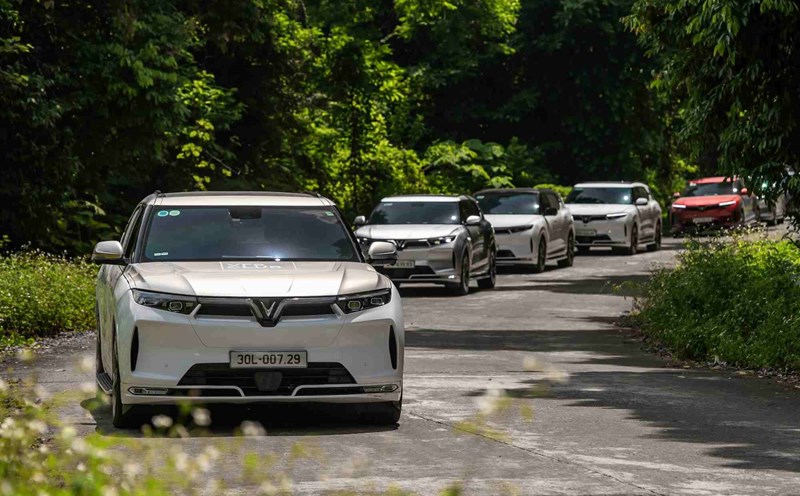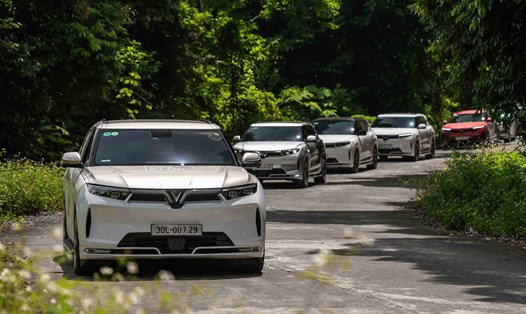Gasoline explodes, charging stations accelerate to cover
Drivers passing through the Uno-X Furuset service station in the suburbs of Oslo recently suddenly noticed a change: One of the four daily fuel pumps has disappeared, giving way to an electric vehicle charging stations, according to Bloomberg hyperdrive.
The replacement of fuel pumps with electric vehicle charging stations in Norway has just begun, but the pace of conversion is increasing rapidly. Many energy enterprises such as Uno-X, St1, or Circle K have converted to this direction.
The Uno-X has replaced about 30 gas stations with chargers in Norway, while Circle K has done the same at more than 10 stations in eight different locations. In the next 12 months, Circle K plans to continue replacing gasoline pumps with charging stations at 10 to 15 more locations.
The St1 is also preparing to launch its first electric vehicle charging station in the center of Oslo next month. This location used to be a Shell gas station that only serves vehicles powered by internal combustion engines. Meanwhile, Circle K currently has about 20 electric vehicle charging stations, many of which are designed with roofs. Most of these stations were previously traditional gasoline and oil pumping stations.
We are building a bridge from the traditional petroleum business to the future of electric vehicles, Clean Technica quoted Ole Johannes Tonnessen, CEO of Uno-X Mobility Norway.
As Norway is on track to become the world's first completely electric vehicle market, the country is also seeing some major upcoming changes in the energy industry. Norwegian gasoline sales are now only a third of a decade ago, while diesel sales have fallen by about 6% in 2023. Currently, 10% of the 2,000 gas stations nationwide have installed additional electric vehicle charging stations next to the gas pumps.
The gradual decline in demand for traditional fuels such as gasoline and oil, along with maintenance and operation costs, are key factors influencing the decision to phase out fuel pumps, said Anders Kleve Svela, director of e-mobility at Circle K Norway. To keep up with market transformation, Norwegian fuel station operators, such as Circle K, are investing in charging stations, even in remote provinces such as Minnesund.
The transformation of the Nordic electric vehicle market
The shift in the Norwegian energy industry also reflects the reality of the electric vehicle market in Northern Europe.
Currently, Norway is a pioneer in the electric vehicle revolution in the world, with 89% of new cars sold last year being pure electric cars.
Not only Norway, but other Nordic countries are also accelerating the transition to electric vehicles at a rapid pace. Last year, 52% of new cars sold in Denmark were electric. In Sweden, the figure is 32% while Finland recorded a pure electric vehicle share of 29%.
Encouragement policies from Nordic governments play a key role in this process. A typical example is Finland, where the government invested 110 million EUR in 2011 to research electric vehicle charging systems. This investment has created a premise for the emergence of electric vehicle charging solutions, Financial Times quoted Mr. Jussi Palola, Creative Director and Co-founder of Virta - a charging and payment management software provider.
Or, in Sweden, tax incentives for businesses when buying electric vehicles for staff have also boosted the market. In 2018, only 16% of cars purchased by enterprises were electric cars. By 2023, that number had surged to 74%, according to the Financial Times.
Local and city governments are also supporting the construction of charging infrastructure. The city of Oslo has helped St1 deploy a fast charging station dedicated to commercial electric trucks in Rommen, with a capacity of up to 400kW.
These impressive results show that the Nordic region is not only a pioneer but is also setting new standards for the process of electrifying transportation globally. With strong support from the Government, businesses and people, the prospect of a future without gasoline vehicles in this area is gradually becoming a reality.











